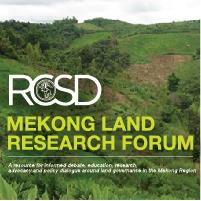Resource information
ABTRACTED FROM FIRST PARAGRAPH: Cambodia’s forests are vital components of the highly threatened Indo-Burma biodiversity hotspot. They contain species found nowhere else on earth, support important populations of some of the planet’s most threatened large mammals and birds and provide resources vital to the livelihoods of millions of rural Cambodians. Prior to changes within the Royal Government of Cambodia (RGC) in early 2016, the Ministry of Environment (MoE) and Ministry of Agriculture, Forestry and Fisheries (MAFF) were both responsible for forest management. MoE managed 23 protected areas (National Parks, Wildlife Sanctuaries, Protected Landscapes, Multiple Use Areas, Ramsar Sites, Biosphere Reserves and Natural Heritage Sites) under the 2008 Protected Areas Law; while under the 2002 Forestry Law, MAFF managed all other forests, including 13 protected forests and landscapes, and all wildlife outside of protected areas. Cambodia, on paper at least, had a comprehensive terrestrial protected area network with 26% of the country designated for conservation. However having two agencies responsible for nature conservation often resulted in confusing jurisdictional overlap. Both ministries were also able to grant economic land concessions (ELCs) in protected areas. Between 2008 and 2012, MoE approved 113 ELCs within protected areas, allowing for some of the country’s best forests to be cleared for agro-industrial cropping. This, along with a focus on development over conservation even in protected areas, one of the lowest expenditures on protected area management in the world and illegal extraction of high value timber species such as threatened rosewoods (Dalbergia spp.), has resulted in extensive forest clearance. Between 2001–2014, acceleration of forest loss in Cambodia was the highest in the world with a 14.4% increase in annual forest loss rate per year. An estimated 60% of the country was forested in 2009, but this had reduced to 48% by 2014. Forests inside protected areas have disappeared as fast as forests elsewhere in the country. In addition to this broad scale habitat loss, wildlife hunting is also a significant cause of forest biodiversity loss in Cambodia.


